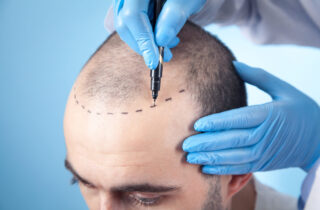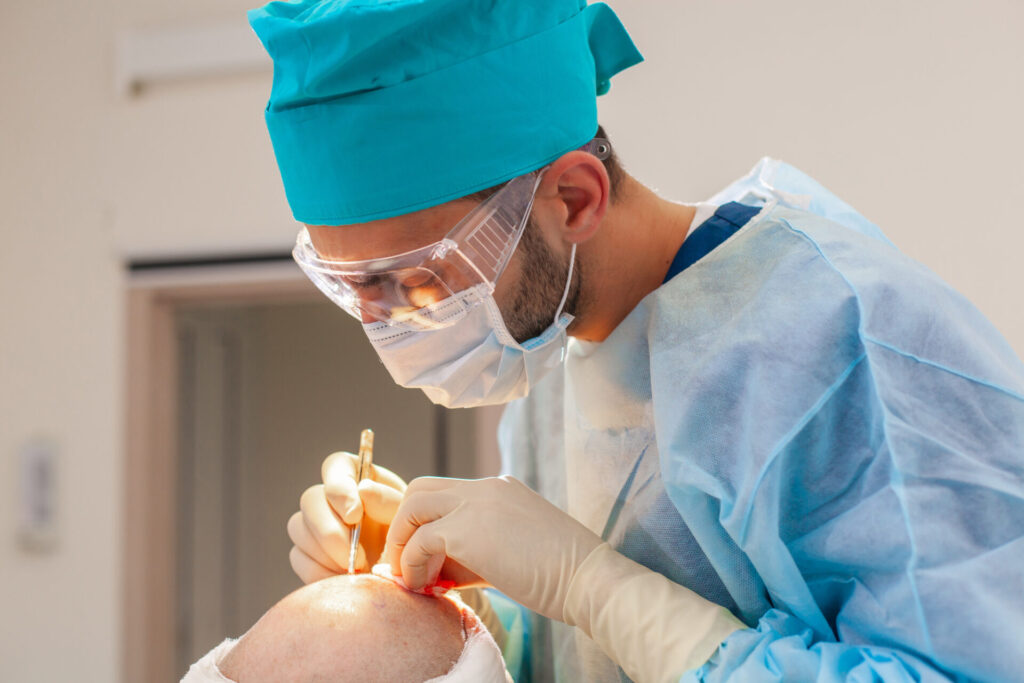
More Hair Care Articles
Understanding and Embracing Hair Replacement Therapies

What do chemotherapy, stress, and hairstyling products have in common? Hair loss.
Exact numbers are all over the place, but it’s estimated that hair loss or alopecia affects 30% of men and women worldwide. There’s a long list of causes, but whatever the case, it degrades a person’s self-esteem and quality of life. Hair is a pervasive symbol of one’s beauty and vitality, and losing it is essentially losing parts of one’s identity, if not its entirety.
The effects of hair loss on one’s health and psyche have prompted research into medications and procedures. While complete hair recovery isn’t always possible, medical advancements have led to the creation of partial hair regrowth methods. Among the most common is hair transplantation or replacement.
What is hair replacement therapy?
To understand how hair replacement therapy works, it’s important to know how hair grows back. Every strand is connected to a follicle beneath the epidermis or skin surface; think of it as a seed that grows as it’s fed nutrients. As new cells are formed in the follicle, the existing hair shaft or strand continually gets pushed out.
Contrary to popular belief, hair loss is a normal process (it should even be called hair shedding instead), but most people don’t notice it because the follicles produce more than enough hair to offset the losses. It only becomes a medical issue when production doesn’t keep up or suddenly stops, attributable to the following:
- Chemotherapy
While the treatment targets rapidly growing malignant cells, it also tends to involve other cells in the process, like hair follicle cells. For some female cancer patients, hair loss is enough reason to refuse chemotherapy.
- Autoimmune diseases
A malfunctioning immune system can struggle to identify good and bad cells, prompting it to attack both. Hair follicles won’t be spared in its blind rampage.
- Physical force
It doesn’t take a lot of force to pull out an entire strand, whether through constant pulling or certain hairstyling methods. If the trauma results in scarring, any hope of hair regrowth in the area is gone for good.
- Heredity
It’s possible to inherit specific baldness genes from an ancestor, leading to male or female pattern baldness, also called androgenic alopecia.
Alopecia hair replacement aims to restart hair growth by harvesting hair follicles from a healthy patch, typically from the sides and back of the head, and implanting them in affected areas. Studies have shown that hair in these donor sites is largely spared from alopecia, possibly due to resistance to dihydrotestosterone, a hormone often linked to male (and sometimes female) pattern hair loss.

How is hair replacement performed?
To perform a hair transplant, practitioners assess their patients and determine the best approach. They have two options: follicular unit strip surgery (FUSS) or follicular unit extraction (FUE).
FUSS, sometimes called follicular unit transplantation (FUT), involves deriving a strip from the donor site and extracting the follicles. The size of the strip is between 0.4 and 0.6 inches, which can have hundreds of hair strands. For comparison, an average human can have 800 to 1,290 hair strands in a square inch of head.
This procedure is ideal for implanting hair strands en masse, not to mention takes less time and money. However, getting the strip can be painful without anesthesia and may leave a visible scar that might dissuade from sporting shorter hairstyles.
Meanwhile, FUE is the more widely used method designed to replace FUSS. Instead of taking a strip full of follicles, the procedure entails harvesting and implanting strands individually. While more time-consuming and expensive, it’s less painful and isn’t limited to factors like hair density and laxity when selecting donor sites.
Which procedure is superior is still the subject of debate among the dermatological community. Both procedures have their benefits and drawbacks, and it’s up to clear communication between the practitioner and the patient to choose the most viable.
How effective is hair replacement?
The first hair transplant procedure was done in 1897 by Dr. Menahem Hodara in Türkiye (then called the Ottoman Empire). Fast-forward to 2021, the International Society of Hair Restoration Surgery recorded over 700,000 transplants performed across the globe. The substantial research and investment into this field over the years attests to its popularity.
But what about its efficacy? Again, the numbers are all over the place, but know that there’s no such thing as a procedure with 100% effectiveness. Some studies put the figure at between 95% and 98%, while others claim around 10% to 80% of transplants will fully develop within several months. These ranges apply to both FUSS/FUT and FUE.
The consensus is that success depends on the conditions before, during, and after the procedure, much like most surgeries. Your doctor may recommend stopping the intake of certain medicines days before the scheduled hair replacement or pre-treating your hair to lower the failure risk.
On the procedural front, people can expect hair replacement technology to grow more advanced. There are even discussions about the feasibility of stem cell transplantation as an alternative to collecting and implanting healthy hair. But as stem cells have yet to be fully understood, current techniques remain the gold standard.
Conclusion
Hair loss continues to carry a social stigma, owing to centuries of identifying hair as a symbol of beauty and vitality. Fortunately, with today’s hair replacement therapies, there’s little to no need to live life without a head full of hair. For most people, getting their bald patches to grow hair once more is enough to make them feel better about themselves.
Other Articles You May Find of Interest...
- When to Consult a Trichologist in Australia: Recognizing the Signs
- Understanding and Embracing Hair Replacement Therapies
- Hair Loss Causes and Remedies
- Unlocking the Secret To Managing Hair Loss In Women
- What Is Alopecia Areata?
- Keralase: Emerging Technology In Hair Loss
- Cyclical Nutritional Therapy For Hair Restoration

















